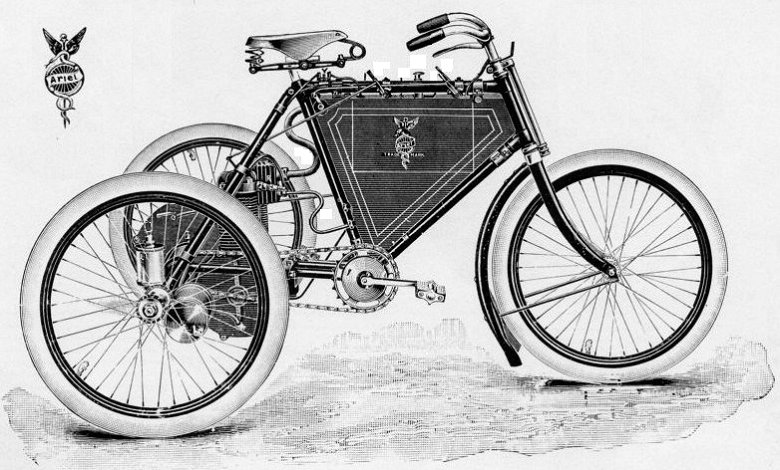In the twilight of the 19th century, streets echoed with the familiar clip-clop of horse hooves and the rattle of carriage wheels. Yet amidst this traditional scene, a revolutionary change was taking shape — the emergence of motorized transport that would forever transform human mobility.
The Ariel Tricycle 1.75 HP, introduced in 1898, emerged as a pivotal milestone in this transformation. This three-wheeled marvel represented more than just an alternative to horse-drawn transport; it embodied the dawn of practical, everyday motorized vehicles.
The Birth of Innovation
The story begins in 1897 when Cycle Components Manufacturing Co. acquired Ariel, setting the stage for a remarkable leap in transportation technology. Engineers faced the monumental task of creating a vehicle that could reliably replace horse-drawn transport while being accessible to the adventurous early adopters of motorized travel.
The development team made a crucial decision to license De Dion’s engine technology, a choice that would prove instrumental in the tricycle’s success. This partnership yielded a compact yet powerful 239cc powerplant that delivered 1.75 horsepower — modest by today’s standards but revolutionary for its time.
“The Ariel Tricycle represented a perfect marriage of innovative engineering and practical design. Its influence on early automotive development cannot be overstated.” — Dr. Jonathan Mitchell, Curator, Vintage Vehicle Heritage Foundation
The strategic placement of this engine before the rear axle demonstrated remarkable foresight in vehicle design, improving both handling characteristics and overall balance — considerations that remain crucial in vehicle design today.
Engineering Marvel
The heart of the Ariel Tricycle was its single-cylinder engine, a masterpiece of late Victorian engineering. At 239 cubic centimeters, it produced 1.75 horsepower — enough to propel the vehicle to speeds exceeding 25 miles per hour, a thrilling velocity in an era when horses typically traveled at 10-15 mph.
Fact!
The Ariel's engine actually outperformed many contemporary Benz motors, making it one of the most advanced powerplants of its era. This achievement was particularly remarkable given the limited metallurgy and manufacturing capabilities of the 1890s.
Key engineering innovations that set the Ariel apart included:
- precision-machined cylinder walls for improved compression;
- advanced spark timing mechanism for reliable ignition;
- innovative cooling fins for thermal management;
- robust transmission system for dependable power delivery;
- carefully balanced crankshaft for smooth operation.
These technical achievements made the Ariel Tricycle a benchmark for early motorized vehicle development.
Design & Practicality
The three-wheel configuration wasn’t merely a design choice — it was a practical solution to the challenges of late 19th-century roads. The tricycle format offered superior stability on uneven surfaces while maintaining maneuverability in crowded urban settings.
“Having restored several 1890s vehicles, I can attest that the Ariel’s design was remarkably forward-thinking. Its attention to user comfort and practical considerations was years ahead of its time.” — William Blackwood, Historical Automotive Society
Important!
The Ariel Tricycle could be fitted with a 'Lady's Attachment' — an early example of modular vehicle design that allowed for passenger transport, making it one of the first family-oriented motorized vehicles.
The layout prioritized accessibility and ease of use, featuring a comfortable riding position and intuitive controls — considerations that helped overcome the public’s initial skepticism toward motorized transport.
Cultural Impact
In urban centers of the late 1890s, the Ariel Tricycle became more than just a means of transport — it represented progress and modernity. The sight and sound of these machines navigating city streets signaled the beginning of a new era in human mobility.
Historical Reference!
During the 1898 Birmingham Industrial Exhibition, the Ariel Tricycle caused such a sensation that police were needed to control the crowds gathering to witness its demonstrations. This event is often cited as one of the first public showcases of practical motorized transport in Britain.
The vehicle’s influence extended beyond mere transportation. It helped establish the concept of personal mechanical mobility, paving the way for the automotive revolution that would define the 20th century.
Beyond the Horizon
Looking back from our vantage point in 2025, the Ariel Tricycle 1.75 HP stands as a testament to human ingenuity and the power of innovative thinking. Its creation marked a crucial step in our journey from horse-drawn carriages to modern vehicles.
The principles that guided its development — efficiency, practicality, and user-focused design — continue to influence vehicle design today, even as we transition toward electric and autonomous transportation.
Pros & Cons
| Advantages | Disadvantages |
|---|---|
| Revolutionary engine placement optimizing balance and handling | Limited production run of only two years |
| Superior speed capabilities compared to contemporary transport | Relatively high cost limiting accessibility |
| Innovative three-wheel design providing stability | Maintenance required specialized knowledge |
| Modular design allowing passenger attachments | Weather protection was minimal |
| Advanced engineering surpassing many competitors | Spare parts availability was inconsistent |
| Reliable ignition system for its era | Starting procedure could be complicated |
| Excellent urban maneuverability | Limited cargo capacity |
The Ariel Tricycle 1.75 HP remains a masterpiece of early automotive engineering. While its limitations reflected the technological constraints of its era, its innovations laid crucial groundwork for future vehicle development. This balance of revolutionary design and practical constraints makes it a fascinating study in early motorized transport evolution.

